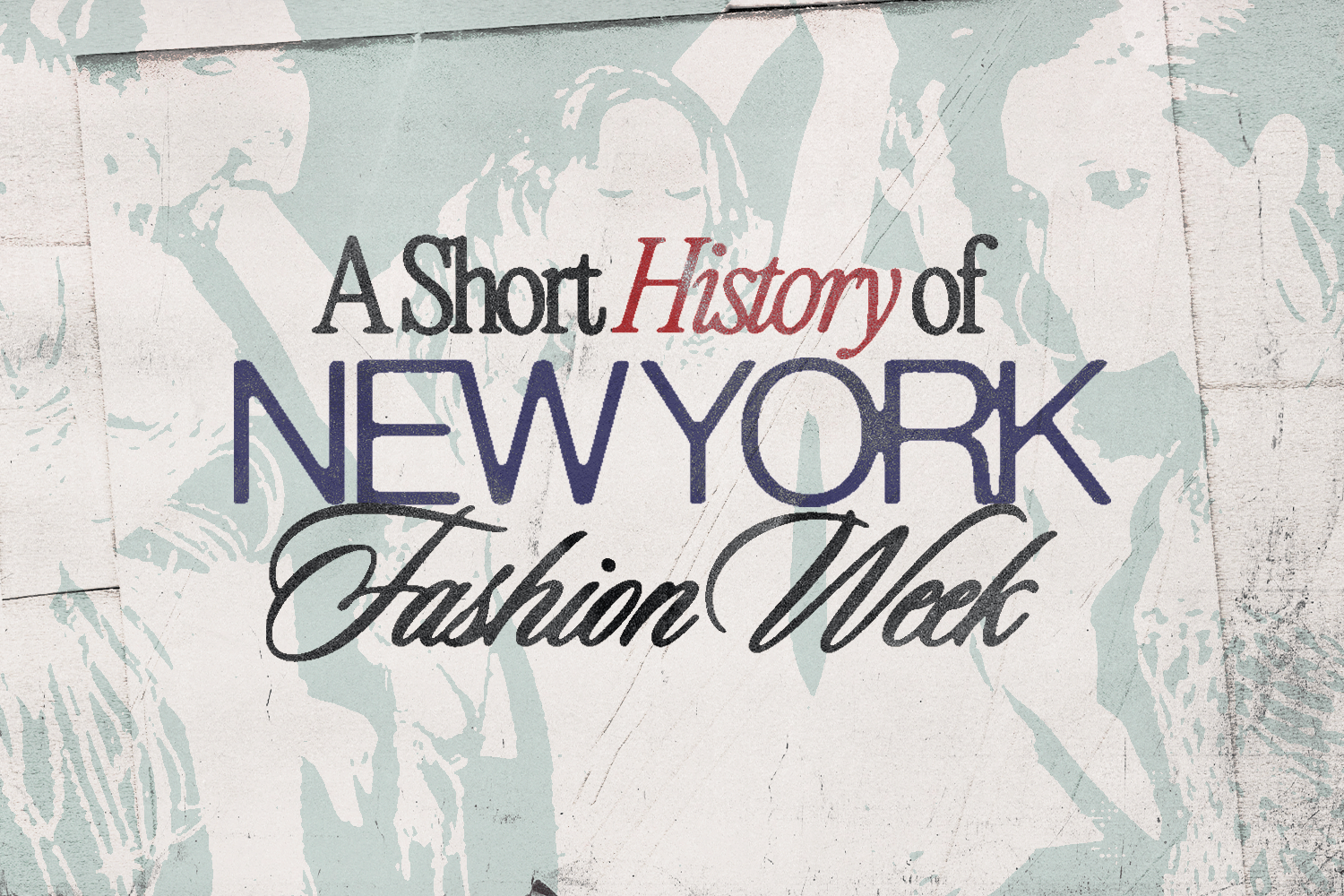The fashion community has geared up for New York Fashion Week’s Fall/Winter 2025 shows. From Feb. 6 to Feb. 11, the days are filled with glitz and glamour as the world’s top executives, journalists and publications view designers’ newest collections. For the past 82 years, designers have had the chance to exhibit some of the most exquisite and transcending new looks to the fashion population. Today the pinnacle event occurs at the Starrett-Lehigh Building, however, designers are presenting all over the city. Throughout Fashion Week, expect to see astounding models on the catwalk, fabulous designs, and PRs catching every moment. But what is known as “New York Fashion Week” today has a long history behind it.
In the early 20th century, the epicenter of the fashion world was Europe. The European’s chic design and classic silhouette shaped artistic styles internationally, and Paris held that wheel. American designers and journalists would travel to Paris Fashion Week to view the latest cutting-edge designs. Yet, as WWII commenced and Germany occupied Paris in the 1940s, traveling to see the said trends had become obsolete. In response, creatives in the United States filled in a vacuum with their own fashion week. Established by Eleanor Lambert, a fashion publicist, the original premise of the catwalk in New York was a press week for journalists to observe and report on promising designers. Runways were intended for the press, buyers had to arrange an alternative time to visit the showroom portion of the presentation.
New York Press Week had become a success for the American creative community, offering designers a platform to showcase their art to journalists, who would review collections in fashion magazines, like Vogue. U.S.-based fashion houses arose as an influential force in the industry. With Lambert’s idea, a surge of interest in runway presentations empowered the fashion trade to evolve. The fashion publicist helped advance the monumental social occasion with the founding of the Council of Fashion Designers of America (CFDA) in 1962; the committee helped allow a national recognition of fashion as a cultural and economic powerhouse. Designers like Oscar De La Renta and Ralph Lauren were able to attract attention at an international proportion.
In the 1970s and 1980s creatives began escalating the runway scenes of Press Week; designers utilized department stores, showrooms, galleries, nightclubs, etc. in every part of the metropolis. And visual artists, like Andy Warhol, became popular attendees. Ensembles also evolved into design trends similar to visionaries like Diane Von Furstenberg and Halston, who dominated the catwalks. Collections saw a rise in the modern American working woman, with large shoulders and silhouettes.
New York Fashion Week progressed to the epitome known today in the 1990s. At the beginning of the decade, the press was irritated with the numerous different locations for the event, and an accident at a Michael Kors show created further issues. During the runway exhibition, the roof caved in onto the audience. At a breaking point, former executive director of the CFDA, Fern Mallis, reckoned the celebration needed a new home. By Spring 1994, she pushed designers to exhibit their collections at a centralized viewing in two white tents at Bryant Park.
From the most illustrious models, namely Kate Moss, Naomi Campell and Linda Evangelista walking the runway; to hordes of influential runway collections from top designers- Marc Jacobs, Alexander Mcqueen and Perry Ellis. The 90s were not only filled with trend after trend but the audiences were crowded with A-list celebrities. New York Fashion Week was at its height of recognition, celebrities and journalists would flock from all over the world to see the star-studded event.
Later in the decade, an enormous change rocked calendar dates for the week. Helmut Lang, after years of presenting in Paris, decided to move his show to New York. When pivoting directions, Lang also decided to show his 1999 spring and summer collection in September rather than the set November date, an unprecedented move. For both business reasons and originality, Lang had wanted to display his designs before anyone else. Soon other designers followed suit with the change; setting NYFW as the opening to the season.
Calendar changes continued into the new century, Fashion Week fell on Sep. 11, 2001, and was canceled. Later economic issues led to some downsizing of the event. However, even with designers opting out in previous years, by 2010, the size of the event was unmanageable, and the event had to be moved to the Lincoln Center.
Runway coverage likewise altered, and blogging created a new approach to how the general public received event updates. With the introduction of broadcasting through a live stream in 2010, people could watch the shows from the comforts of their homes. In subsequent years, shows moved to Tribeca Spring Studios, before finding their way to the Starrett-Lehigh Building, where NYFW flourishes today.
NYFW is a glamorous exhibition of designers from all walks of life, one that fuels the creativity of the industry, a pinnacle of the American fashion community. For the past 82 years, the event has highlighted the finest trends and collections of the season. From embellishments to patterns, fashion waits to see the extravagance and opulence of creative talents every year.
Words by Alexandra Salazar-Rodó
Graphics by Aubrey Lauer

